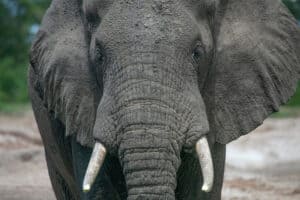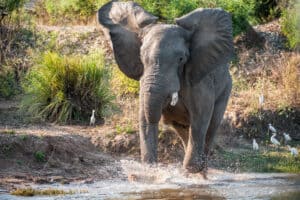Continue reading for our analysis...

This is a shocking elephant vs. rhino showdown with the elephant getting the upper hand. The mama rhino puts on an impressive defensive display but cannot compete with the sheer size of the elephant.
Is It Normal for Elephants to Attack Rhinos?
Elephants normally co-exist with other herbivores peacefully. It is normal for elephants to ignore antelopes, warthogs, and zebras. In contrast, they seek out lions and drive them away. Most of the time, they would ignore rhinos, but this elephant clearly wants them to move on. The majority of elephant attacks on rhinos have been mother elephants defending their offspring, and these are more frequent at watering holes. However, there have been isolated incidents of aggression committed by juvenile male elephants with no male role models to follow or to keep them in check. They had effectively become ‘delinquents’ and were killing rhinos for no reason.
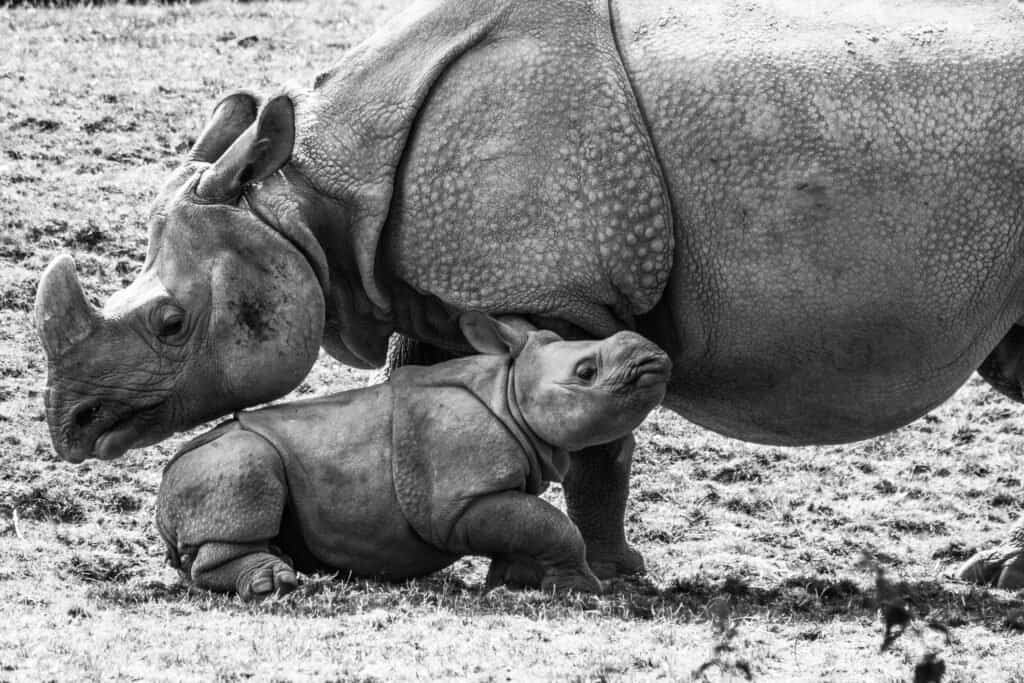
Mother Rhinos are very protective of their young calves.
©Hill2k/Shutterstock.com
How Elephants Show Aggression
The intricate and fascinating body language of elephants never ceases to amaze. In this particular instance, it is clear that the elephant’s behavior can be interpreted as classic aggression or defensiveness. As a means of protecting itself from perceived threats or danger, the elephant turns its massive body towards the source of potential harm and spreads its ears wide open in an intimidating display.
In addition to these physical cues, there are other behaviors that can be observed when an elephant feels threatened. Nodding, jerking, and shaking their head are all common responses – as is swishing their trunk around frantically. All these actions serve to create a loud and chaotic environment which can help deter predators or other animals who may pose a threat.

Elephants drink between 20 and 50 gallons of water each day.
©Efimova Anna/Shutterstock.com
One particularly interesting aspect of this scene is how the elephant uses its tusks to drive away the rhino. Despite being significantly more friendly than many other species in Africa, elephants possess powerful tools for self-defense through their large ivory tusks.
It’s not just about brute force, though; elephants have been known to use their tusks with incredible accuracy and precision when defending themselves against predators or competing for resources such as water holes during dry seasons.
Overall, observing an elephant displaying aggressive/defensive behavior provides us with valuable insights into these magnificent creatures’ complex social hierarchy and survival strategies in challenging environments fraught with dangers at every turn.
How Does Elephant Size Compare to a Rhino?
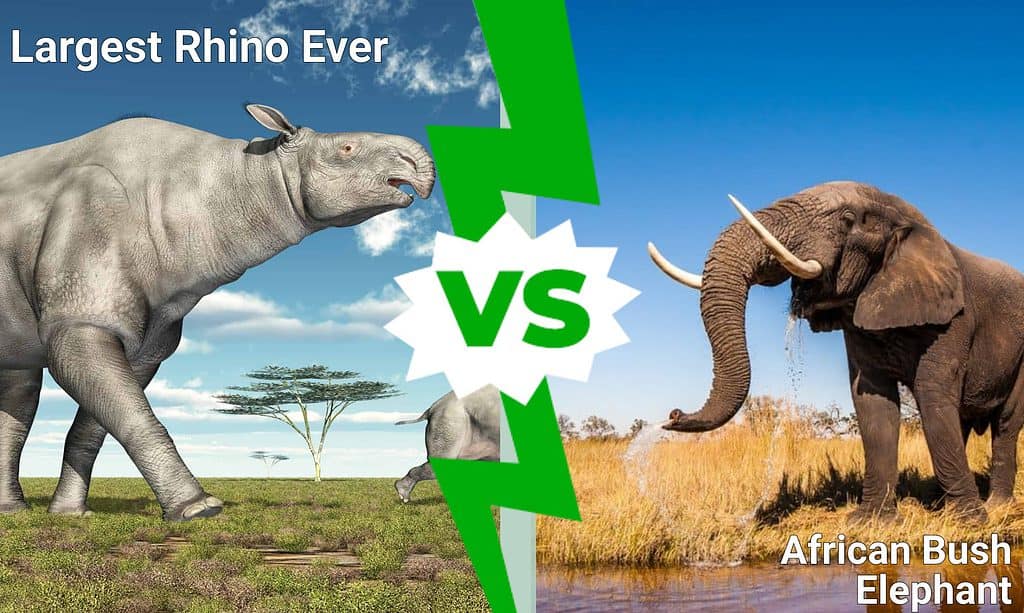
When it comes to size, elephants are the true giants of the animal kingdom. An adult bull African savannah elephant can grow to an astounding 13,889 pounds and stand up to 13 feet tall at the shoulder. Even female elephants can reach impressive weights of over 7,000 pounds. In comparison, rhinos may seem large, but they cannot compete with these massive creatures. The white rhino has a maximum weight of only 5,100 pounds, while the black rhino is even smaller, with a maximum weight reaching just 3,970 pounds.
Despite their enormous size, elephants are known for their gentle nature and intelligence. They are highly social animals that form strong bonds with others in their herd and display complex behaviors such as mourning for lost members or using tools in order to access food or water sources.
Rhinos, on the other hand, are solitary creatures by nature and tend to be much more aggressive when threatened. Their thick skin serves as protection against predators but also makes them vulnerable to poachers seeking valuable ivory from their tusks.
Overall, both elephants and rhinos play important roles in maintaining balance within ecosystems where they live, but it is clear that when it comes to the sheer size and strength – nothing quite compares to an elephant!
How Much Do Elephants Drink?
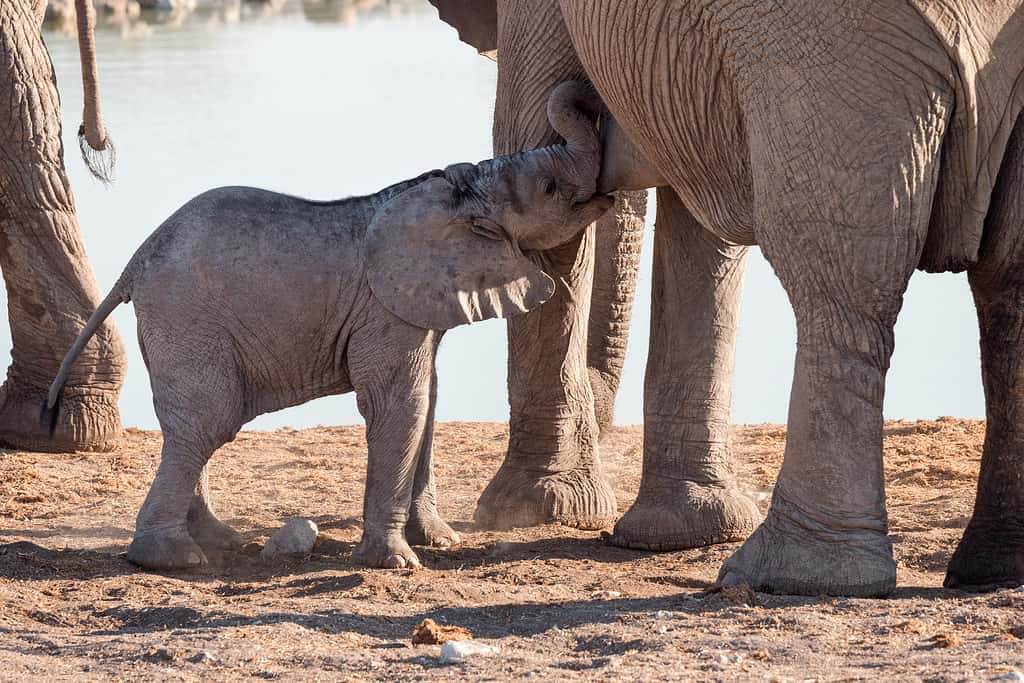
Mama elephants are very protective of their babies.
©Dietmar Rauscher/Shutterstock.com
Elephants are one of the largest land animals on earth, and as such, they require a significant amount of water to maintain their health. In fact, these gentle giants need anywhere from 20-50 gallons of water every day. While this may seem like an enormous amount, it’s important to note that elephants do not constantly drink throughout the day. Instead, they typically consume water once per day or whenever it is available.
Interestingly enough, elephants have developed certain adaptations that allow them to survive in arid environments where water sources may be scarce. For example, during periods of drought or extreme heat when drinking opportunities are limited, elephants can go for several days without consuming any fluids at all.
Despite this impressive ability to conserve water in times of need, access to fresh drinking sources remains critical for elephant survival and well-being. This is why watering holes like the one featured in our video are so precious – not just for elephants but also for other wildlife species that depend on them as well.
Overall, understanding how much and how often elephants drink is crucial information for conservationists looking to protect these magnificent creatures and preserve their habitats around the world.
Thank you for reading! Have some feedback for us? Contact the AZ Animals editorial team.



